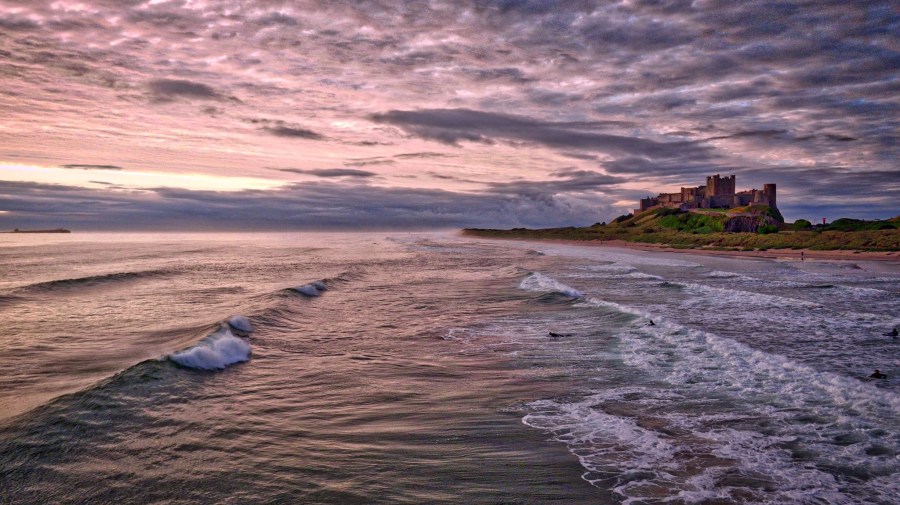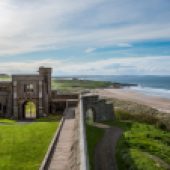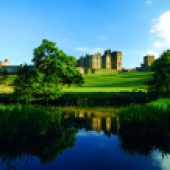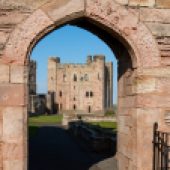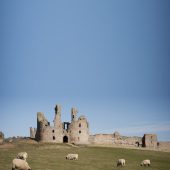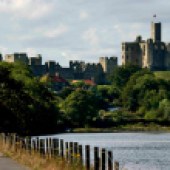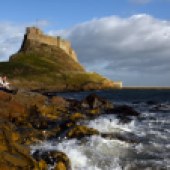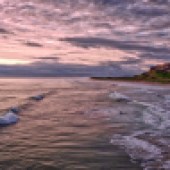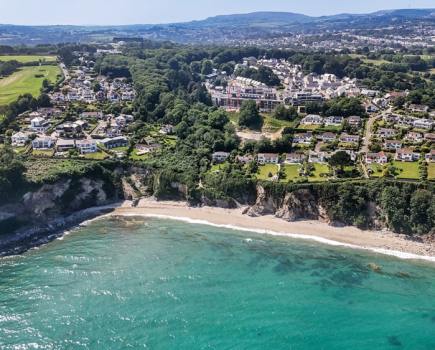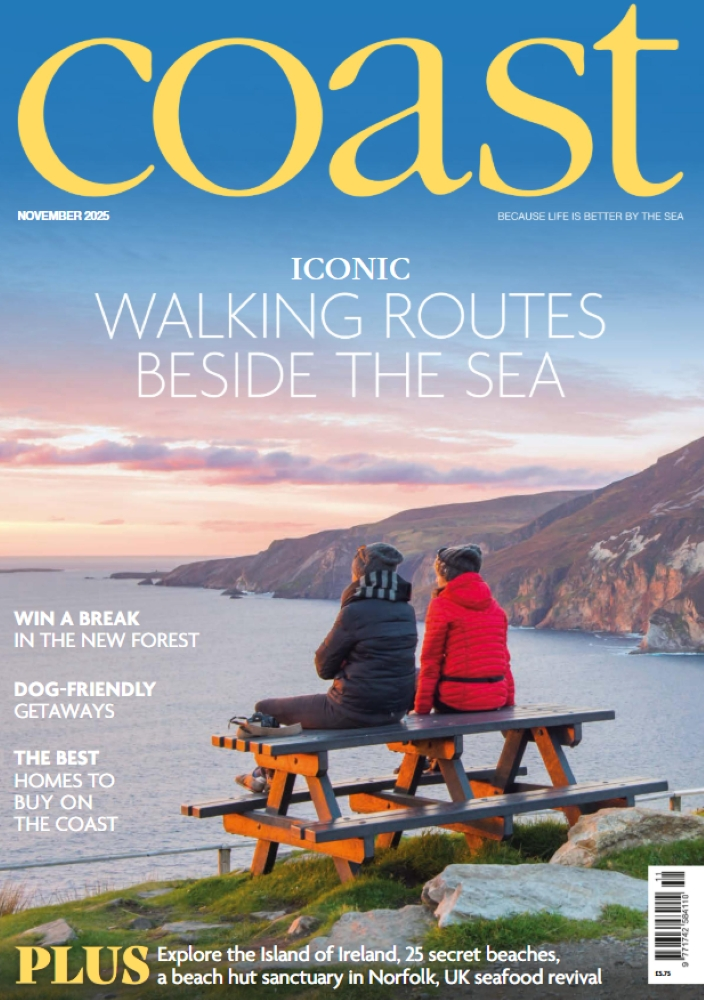THE ULTIMATE CASTLE – BAMBURGH CASTLE, BAMBURGH
Imposing Bamburgh Castle, built on a 150-foot high escarpment, has views of the Farne Islands and Holy Island. It was the capital of the Northumbrian Kings in the sixth century, duly ransacked in 993 by the Vikings, and a century later became the northern garrison for William the Conqueror’s army. Thankfully in the late 19th century, it became the restoration project of Victorian inventor, William Armstrong, who made his fortune in hydraulics. Now beautifully restored, Bamburgh is home to Armstrong descendants who happily share its riches. Marvel at the huge keep, admire the tiny golden Anglo Saxon ‘Bamburgh Beast’ found on site, and enjoy the collections of antiques. Celebrate the spectacular sea views with a glass of Bamburgh Castle ale.
*How to visit: Bamburgh Castle is open daily, tickets are pre-bookable and cost £11.75 for adults, £5.75 for children. To find out more call 01668 214208 or browse bamburghcastle.com.
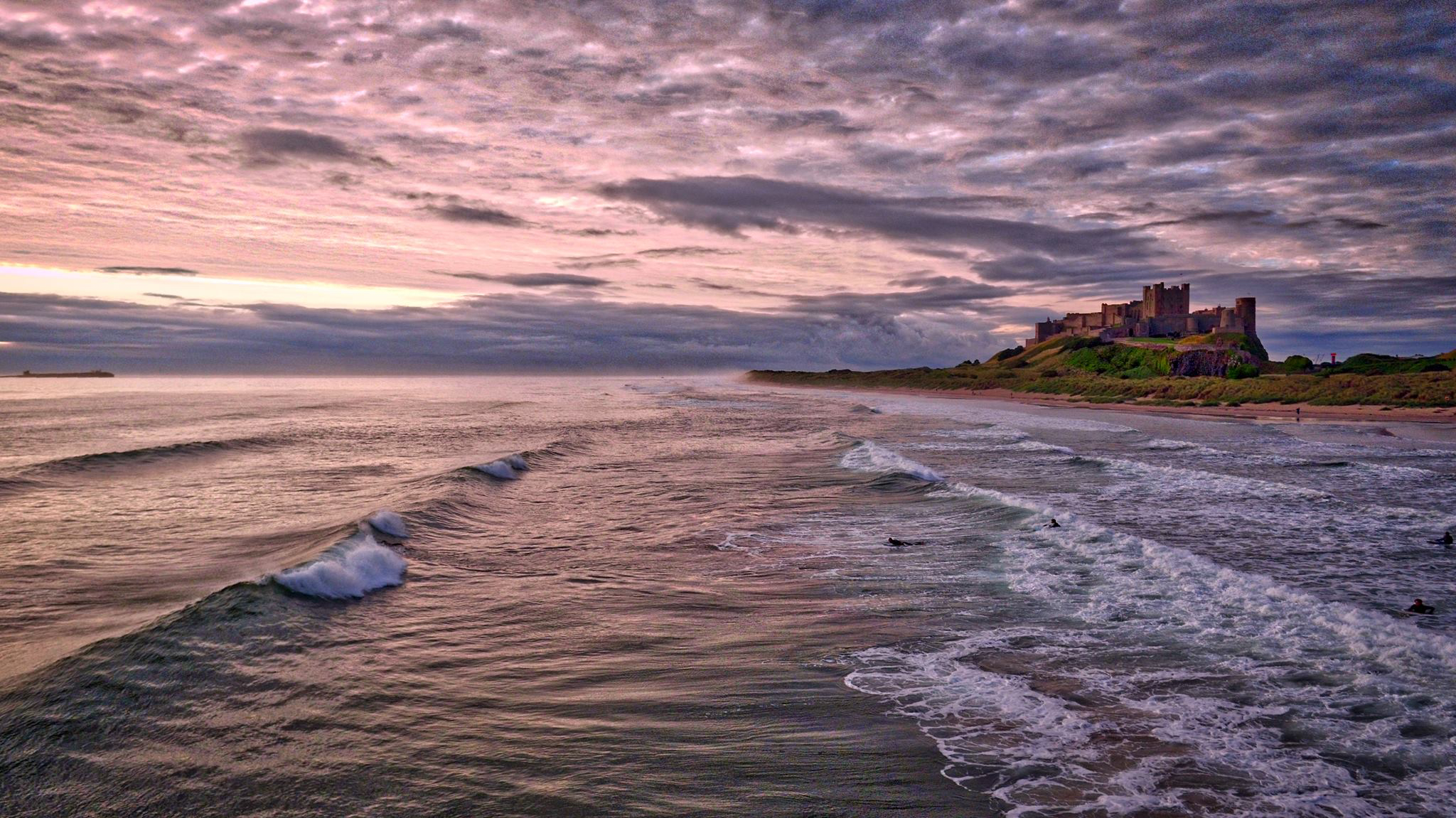
THE ISLAND CASTLE – LINDISFARNE CASTLE, HOLY ISLAND
Dramatically situated on a Holy Island crag, Lindisfarne Castle is accessed via a tidal causeway. The Tudor fort was completed in 1570 as a defence against the Scots and for three hundred years was a soldiers’ garrison. In 1901, the castle ruins took the fancy of Edward Hudson, the founder of Country Life magazine, who employed architect Edwin Lutyens to conjure up from them an idiosyncratic holiday home, garden by Gertrude Jekyll. Enjoy the Arts & Crafts pewter and unique Lutyens-designed furniture. Remnants of the old fort are still visible – the soldiers’ bread oven in the dining room, for example, and the Victorian doors that led to the gunpowder magazine – now the west bedroom.
*How to visit: Now run by the National Trust, castle entry is £9 for an adult, £4.50 for a child. Check tide times before you go. Find out more at nationaltrust.org.uk or call 01289 389244. LINDISFARNE CASTLE IS TEMPORARILY CLOSED, PLEASE CHECK WEBSITE FOR UPDATES.
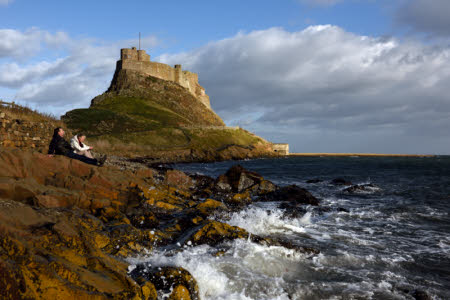
THE ROMANTIC CASTLE – DUNSTANBURGH CASTLE, ALNWICK
A remote headland between Craster and Embleton is the stage for this magnificent 14th century ruined fortress. Earl Thomas of Lancaster, King Edward II’s most powerful baron, built the imposing stronghold in 1313 but within a few hundred years it had become a romantic ruin captured by landscape painters such as JMW Turner. During the Second World War it was an army observation post as fears grew of a German invasion of north east England. Today, the castle is all peacefulness, reached by a 1.3-mile walk from Craster, which is also famous for its kippers. As you munch your picnic lunch let the history sink in.
How to visit: Run by English Heritage and open daily, castle entry is £5.90 for adults, £3.50 for children; tickets must be booked in advance. Find out more at english-heritage.org.uk or call 01665 576231.
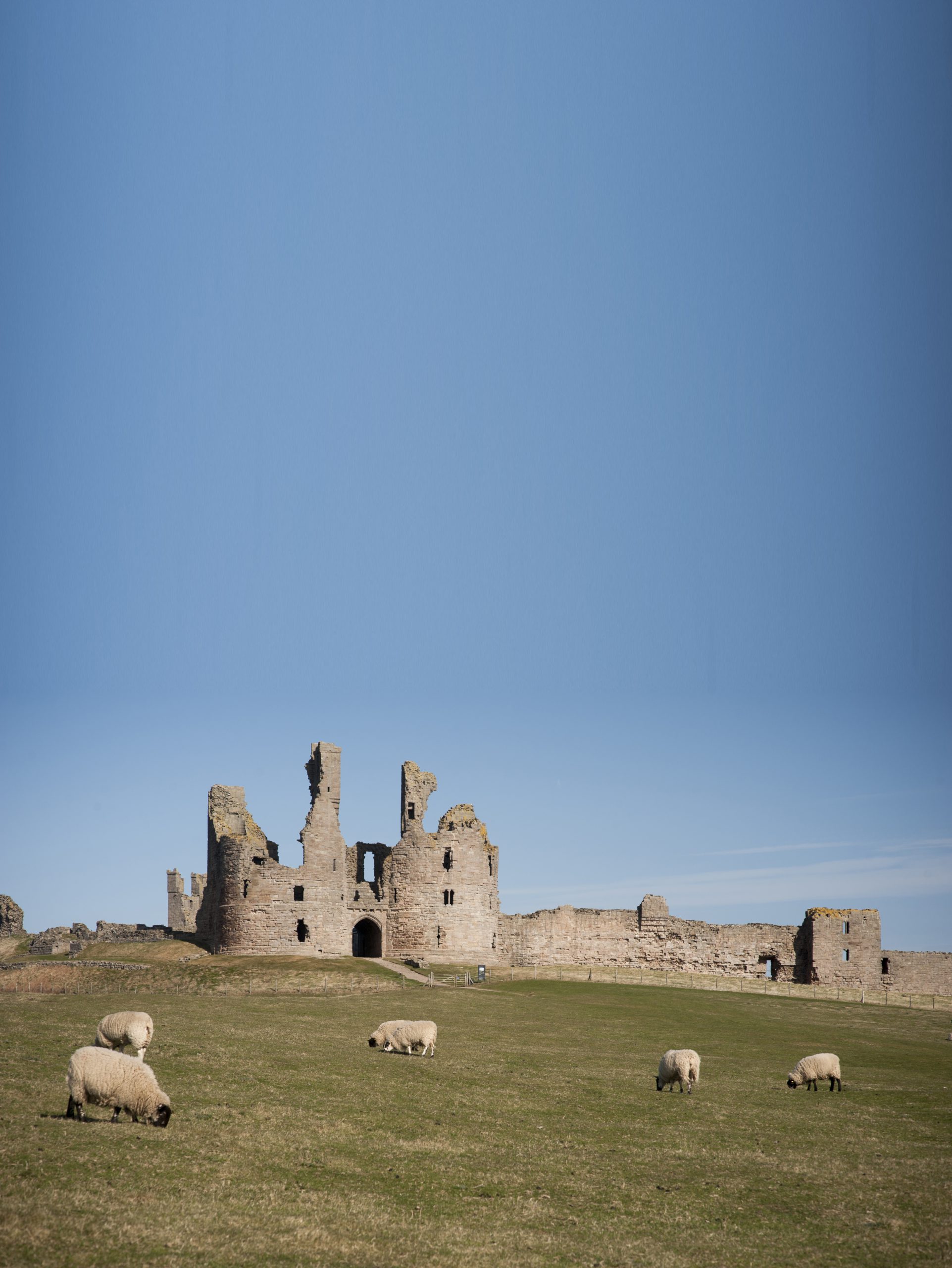
THE MASTERPIECE CASTLE – WARKWORTH CASTLE AND HERMITAGE, WARKWORTH
Perched on a hilltop above the river Coquet, a mile from the coast, Warkworth Castle was built between 1199 and 1214, and became the stronghold of the Percy family. Earls, then Dukes, of Northumberland, the powerful family was one of the greatest landowners in the north of England, reflected by their carved stone motif, a lion. Algernon Percy, 4th Duke of Northumberland, saved the castle in the 1850s by restoring the Great Tower, a masterpiece of medieval architecture. Check out the apartments, decorated with embossed gold leather and kitted out with specially commissioned furniture. Half a mile away is the Hermitage, a tiny chapel carved from rock, and the thoughtful legacy of the first Earl.
How to visit: Run by English Heritage and open daily, castle entry is £7.90 for adults, £4.70 for children; tickets must be booked in advance. Find out more at english-heritage.org.uk or call 01665 711423.
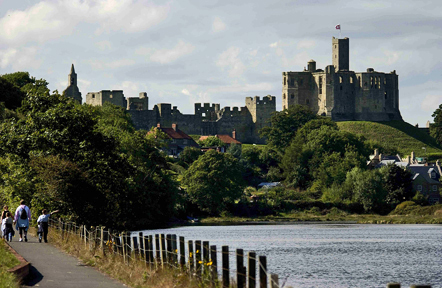
THE FAMILY CASTLE – ALNWICK CASTLE, ALNWICK
1096 is believed to be year zero for the building of Alnwick Castle above the river Aln. For 700 years, the fortress has been the residence of the Percy family and is one of the largest inhabited castles in Britain. Twelve Dukes of Northumberland have come and gone, including the present incumbent, Ralph Percy and his wife Jane who have lured a new generation of visitors across the medieval drawbridge. The Italian Renaissance-style state rooms created in the 1860s by Algernon Percy (who also did up Warkworth Castle, see left/right) are a must-see and showcase the family’s renowned collection of antique furniture, art and porcelain. Perhaps the biggest wow factor is the magnificent library filled with 15,000 books. The Castle was a filming location for two Harry Potter films, Philosopher’s Stone and Chamber of Secrets, and now runs 25-minute Broomstick Training sessions, great fun by all accounts.
How to visit: Alnwick Castle is open daily from late March to late October, entry is £18.50 for adults, £9.75 for children and tickets can be booked in advance. Find out more at alnwickcastle.com or call 01665 511100.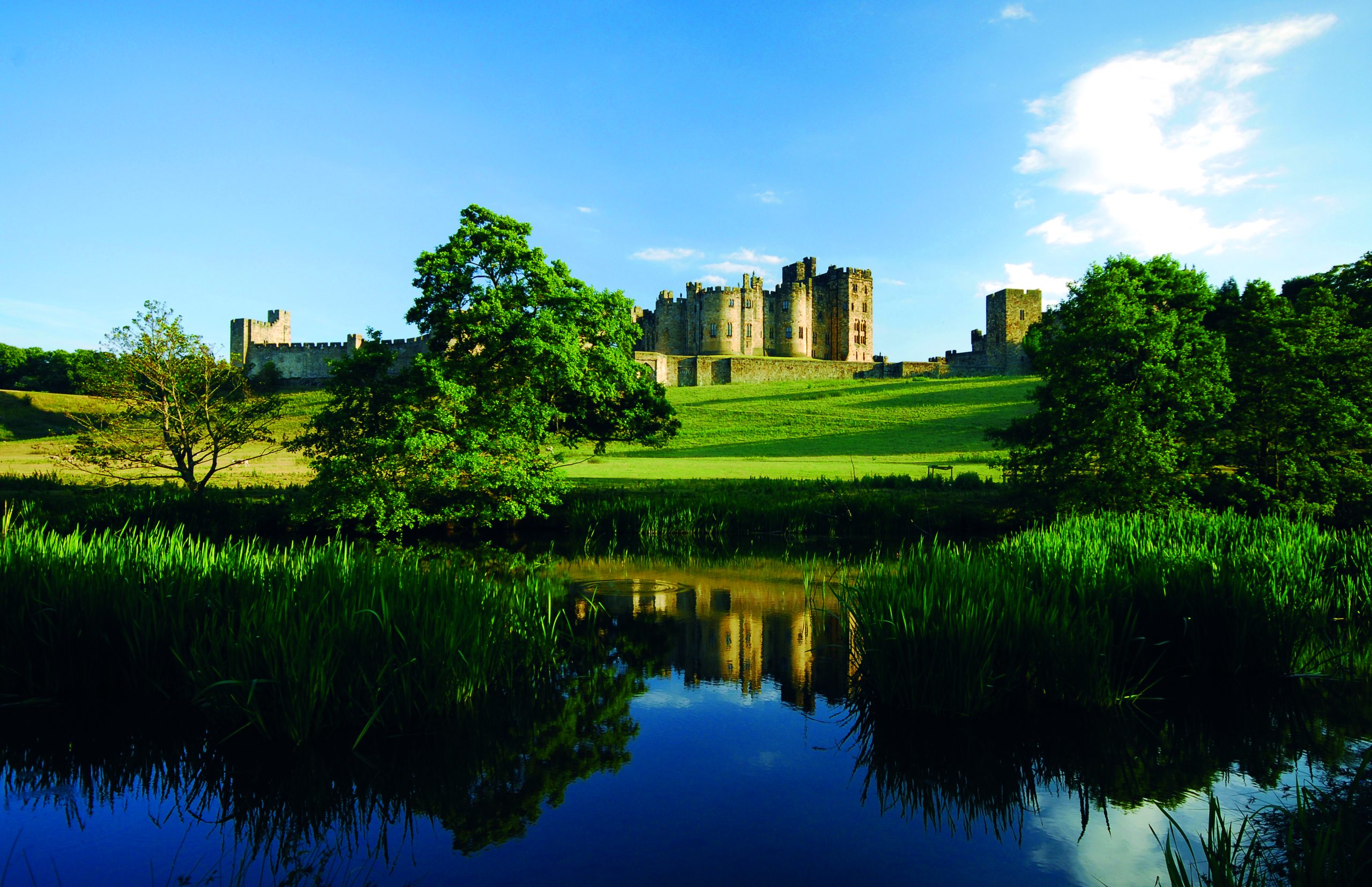
Please check the castle's websites and Government guidelines before travelling.
For more of our guides to favourite coastal places to visit, go to our Coastal Guides section or pick up a copy of Coast magazine.
LIVE THE CASTLE LIFE
Fancy booking a stay in or near one of these beautiful castles?
*At Bamburgh Castle there are various estate holiday cottages available to rent, plus the much sought after Neville Tower, which is inside the castle itself and has stupendous views over the beach and sea beyond. The tower is on three levels and accommodates four people in two spacious bedrooms, each with sea views. Price for a short break from £690, book at crabtreeandcrabtree.com.
*On Holy Island, a 10-minute walk from Lindisfarne Castle, is St Oswald’s Cottage, grade II listed and designed by Sir Edwin Lutyens for Edward Hudson. It accommodates up to five people, plus two dogs, with a minimum stay of three nights. Price for three nights from £493, book at nationaltrust.org.uk/holidays.
THE ULTIMATE CASTLE – BAMBURGH CASTLE, BAMBURGH
Imposing Bamburgh Castle, built on a 150-foot high escarpment, has views of the Farne Islands and Holy Island. It was the capital of the Northumbrian Kings in the sixth century, duly ransacked in 993 by the Vikings, and a century later became the northern garrison for William the Conqueror’s army. Thankfully in the late 19th century, it became the restoration project of Victorian inventor, William Armstrong, who made his fortune in hydraulics. Now beautifully restored, Bamburgh is home to Armstrong descendants who happily share its riches. Marvel at the huge keep, admire the tiny golden Anglo Saxon ‘Bamburgh Beast’ found on site, and enjoy the collections of antiques. Celebrate the spectacular sea views with a glass of Bamburgh Castle ale.
*How to visit: Bamburgh Castle is open daily, tickets are pre-bookable and cost £11.75 for adults, £5.75 for children. To find out more call 01668 214208 or browse bamburghcastle.com.

THE ISLAND CASTLE – LINDISFARNE CASTLE, HOLY ISLAND
Dramatically situated on a Holy Island crag, Lindisfarne Castle is accessed via a tidal causeway. The Tudor fort was completed in 1570 as a defence against the Scots and for three hundred years was a soldiers’ garrison. In 1901, the castle ruins took the fancy of Edward Hudson, the founder of Country Life magazine, who employed architect Edwin Lutyens to conjure up from them an idiosyncratic holiday home, garden by Gertrude Jekyll. Enjoy the Arts & Crafts pewter and unique Lutyens-designed furniture. Remnants of the old fort are still visible – the soldiers’ bread oven in the dining room, for example, and the Victorian doors that led to the gunpowder magazine – now the west bedroom.
*How to visit: Now run by the National Trust, castle entry is £9 for an adult, £4.50 for a child. Check tide times before you go. Find out more at nationaltrust.org.uk or call 01289 389244. LINDISFARNE CASTLE IS TEMPORARILY CLOSED, PLEASE CHECK WEBSITE FOR UPDATES.

THE ROMANTIC CASTLE – DUNSTANBURGH CASTLE, ALNWICK
A remote headland between Craster and Embleton is the stage for this magnificent 14th century ruined fortress. Earl Thomas of Lancaster, King Edward II’s most powerful baron, built the imposing stronghold in 1313 but within a few hundred years it had become a romantic ruin captured by landscape painters such as JMW Turner. During the Second World War it was an army observation post as fears grew of a German invasion of north east England. Today, the castle is all peacefulness, reached by a 1.3-mile walk from Craster, which is also famous for its kippers. As you munch your picnic lunch let the history sink in.
How to visit: Run by English Heritage and open daily, castle entry is £5.90 for adults, £3.50 for children; tickets must be booked in advance. Find out more at english-heritage.org.uk or call 01665 576231.

THE MASTERPIECE CASTLE – WARKWORTH CASTLE AND HERMITAGE, WARKWORTH
Perched on a hilltop above the river Coquet, a mile from the coast, Warkworth Castle was built between 1199 and 1214, and became the stronghold of the Percy family. Earls, then Dukes, of Northumberland, the powerful family was one of the greatest landowners in the north of England, reflected by their carved stone motif, a lion. Algernon Percy, 4th Duke of Northumberland, saved the castle in the 1850s by restoring the Great Tower, a masterpiece of medieval architecture. Check out the apartments, decorated with embossed gold leather and kitted out with specially commissioned furniture. Half a mile away is the Hermitage, a tiny chapel carved from rock, and the thoughtful legacy of the first Earl.
How to visit: Run by English Heritage and open daily, castle entry is £7.90 for adults, £4.70 for children; tickets must be booked in advance. Find out more at english-heritage.org.uk or call 01665 711423.

THE FAMILY CASTLE – ALNWICK CASTLE, ALNWICK
1096 is believed to be year zero for the building of Alnwick Castle above the river Aln. For 700 years, the fortress has been the residence of the Percy family and is one of the largest inhabited castles in Britain. Twelve Dukes of Northumberland have come and gone, including the present incumbent, Ralph Percy and his wife Jane who have lured a new generation of visitors across the medieval drawbridge. The Italian Renaissance-style state rooms created in the 1860s by Algernon Percy (who also did up Warkworth Castle, see left/right) are a must-see and showcase the family’s renowned collection of antique furniture, art and porcelain. Perhaps the biggest wow factor is the magnificent library filled with 15,000 books. The Castle was a filming location for two Harry Potter films, Philosopher’s Stone and Chamber of Secrets, and now runs 25-minute Broomstick Training sessions, great fun by all accounts.
How to visit: Alnwick Castle is open daily from late March to late October, entry is £18.50 for adults, £9.75 for children and tickets can be booked in advance. Find out more at alnwickcastle.com or call 01665 511100.
Please check the castle's websites and Government guidelines before travelling.
For more of our guides to favourite coastal places to visit, go to our Coastal Guides section or pick up a copy of Coast magazine.
LIVE THE CASTLE LIFE
Fancy booking a stay in or near one of these beautiful castles?
*At Bamburgh Castle there are various estate holiday cottages available to rent, plus the much sought after Neville Tower, which is inside the castle itself and has stupendous views over the beach and sea beyond. The tower is on three levels and accommodates four people in two spacious bedrooms, each with sea views. Price for a short break from £690, book at crabtreeandcrabtree.com.
*On Holy Island, a 10-minute walk from Lindisfarne Castle, is St Oswald’s Cottage, grade II listed and designed by Sir Edwin Lutyens for Edward Hudson. It accommodates up to five people, plus two dogs, with a minimum stay of three nights. Price for three nights from £493, book at nationaltrust.org.uk/holidays.

